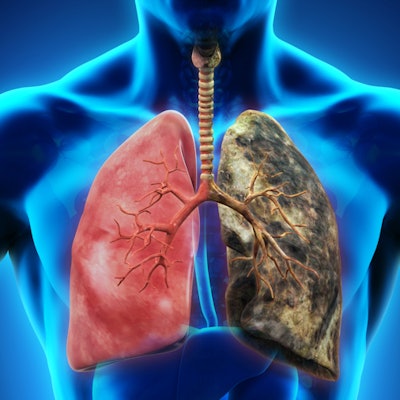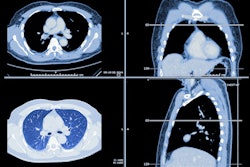
A machine-learning algorithm can be highly accurate for classifying very small lung nodules found in low-dose CT lung screening programs, according to a poster presentation at this week's American Association for Cancer Research (AACR) Virtual Special Conference on Artificial Intelligence, Diagnosis, and Imaging.
A team of researchers from Canada trained an artificial intelligence (AI) model to perform the challenging task of classifying very small, subcentimeter nodules. In validation, the algorithm significantly outperformed the Prostate, Lung, Colorectal, and Ovarian (PLCO) m2012 risk-prediction model and produced its best results when demographic variables were added on to the CT radiomics analysis.
"Combined with clinician expertise and experience, this has the potential to enable earlier intervention and reduce the need for follow-up CT," said first author and presenter Rohan Abraham, PhD, a postdoctoral fellow at the BC Cancer Research Center in Vancouver, British Columbia.
Current lung nodule classification methods rely on nodule size, a factor that's of limited use for subcentimeter nodules, or volume doubling time, a variable that requires follow-up CT exams. Very small lung nodules -- with solid components of less than 8 mm in diameter and therefore below the Lung-RADS 4A risk-stratification threshold -- are very difficult to classify, and they are often given a "wait and see" management plan, according to Abraham.
The researchers sought to utilize machine-learning techniques to characterize these small nodules as either malignant or benign, potentially reducing the need for follow-up CT scans. They trained their machine-learning algorithm using data drawn from the Pan-Canadian Early Detection of Lung Cancer (PanCan) study.
This cohort consisted of 139 malignant nodules and 472 benign nodules that were approximately matched in size. Next, the researchers applied size restrictions based on Lung-RADS classification criteria to remove any nodules from the dataset that would already be considered suspicious, which would include any nodule with solid components greater than 8 mm in diameter.
In their CT radiomics approach, approximately 170 texture and shape radiomic features are extracted following semi-automated nodule segmentation on the images. The linear discriminant analysis (LDA) machine-learning algorithm then analyzes and classifies the nodule.
The researchers then compared the performance of the machine-learning algorithm with that of PLCOm2012 malignancy risk score calculator on the dataset.
"Prior to this work, [the PLCOm2012 malignancy risk score calculator] is in some sense the best prediction that would be available for these small nodules that would otherwise likely be assigned a wait-and-see status," Abraham said.
The machine-learning model outperformed PLCOm2012 by a significant margin, with the best results achieved when incorporating analysis of demographic information such as age, sex, and smoking status. They measure performance using area under the curve (AUC) for classifying small lung nodules.
| AI performance for classifying small lung nodules on LDCT | ||
| PLCOm2012 risk-prediction model | Machine-learning algorithm analysis of CT radiomics features and patient demographics | |
| AUC | 0.68 | 0.84 |
Delving deeper into the results, the researchers found that their model could yield even better accuracy -- an AUC of 0.95 -- in a subset of patients who were younger than 64, female, did not have emphysema, smoked fewer than 42 pack years, did not have a family history of lung cancer, and were not current smokers.
Abraham noted that their model will be validated in an international lung screening trial. Data collection is still ongoing, he said.





















